St. Peter's MO
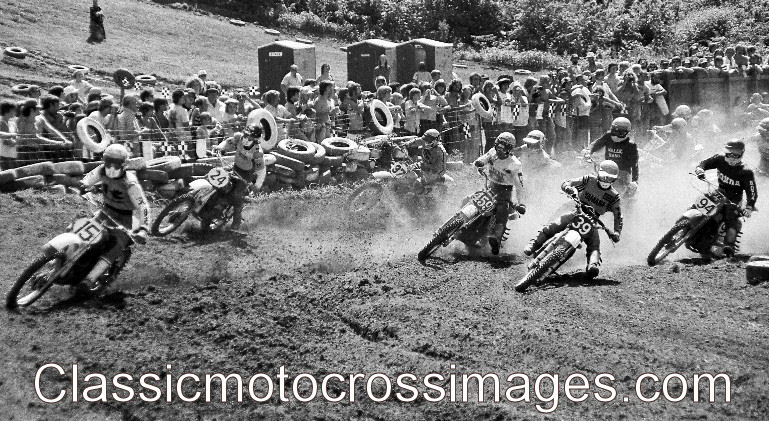
By the summer of 1976 a change was taking place. Long travel suspensions were the norm but other than Yamaha with their monoshock, dual shocks canted forward on the rear were the common set up. The Fox Airshox was first starting to be used by Kent Howerton on his Husqvarna and all of the Japanese works bikes were becoming more advanced than anything from Europe. Gary Semics Kawasaki in particular looked to be hand built and the new all red Honda RC500 Type II's were there in full force. These works bikes were nothing like the production bikes being sold at that time. To learn more about these bikes I highly recommend going to the links section for more details. With the added suspension travel the speeds were increasing and the ability to jump higher and further was evident. Pierre Karsmakers was on a Honda and competing in the GP's in Europe as well as selected races in the States. Pierre almost single handedly made U.S. riders faster by racing here as opposed to Europe starting back in '73 and he was still very fast in '76. The first wave of U.S. riders like Brad Lackey and Kent Howerton were now coming into their own with a younger second wave coming on as well.
In the first turn you can see Bob Hannah knifing on the inside with Gary Semics on the #15 Kawasaki and #24 Brad Lackey taking the outside line.
|
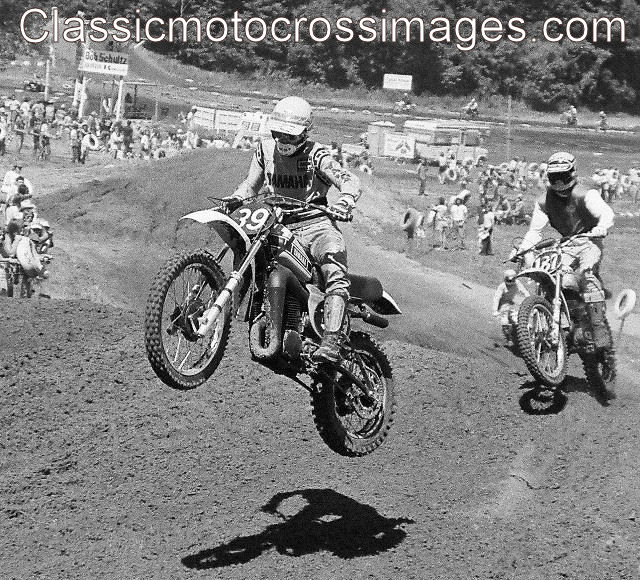
This was also the first race for me to see Bob Hannah ride in person. I had never even heard of him from any of the national racing magazines until he was signed by Yamaha early that year. He was focused on the 125 class riding the first watercooled bike in '76 and he was giving defending champion Marty Smith all the competition he would want. But this day he was riding a 500 and it was something to see a high number like his #39 showing aggressive speed and clearly being faster than established stars like Tony DiStefano. The thing about Bob was he seemed to come out of nowhere. He was a rookie factory pilot yet he was 19 going on 20 and he had a charging style that made you not want to take your eyes off of him. This was the first picture I ever took of him during practice. He was hitting this jump as hard as anyone I had ever seen before and this was before the racing really started. You somehow knew you were seeing the future star of American motocross even in his first National season.
|
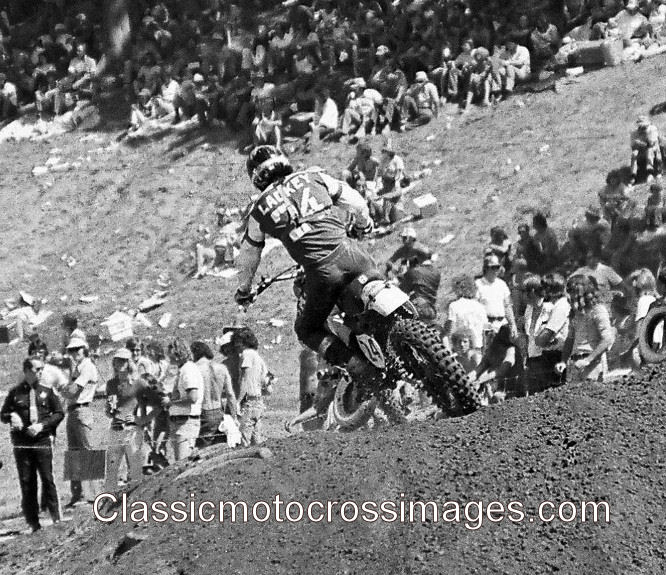
Brad Lackey was focused on the GP 500cc World Championships in Europe but like Karsmakers he was jetting back and forth between the continents competing in the big races for his employer. Husqvarna was a Swedish manufacturer and an early supporter of off road motorcycling. The brand name is still around but is now part of an Italian conglomerate and not really the same company. Their early bikes were always very classy and had a very evolved look over the years. Their signature was the unpainted sections on the tanks where your knees would rub paint off the metal tanks of other brands.
Summers are hot and humid in the midwest and you can tell the crowd was enjoying the shade.
|
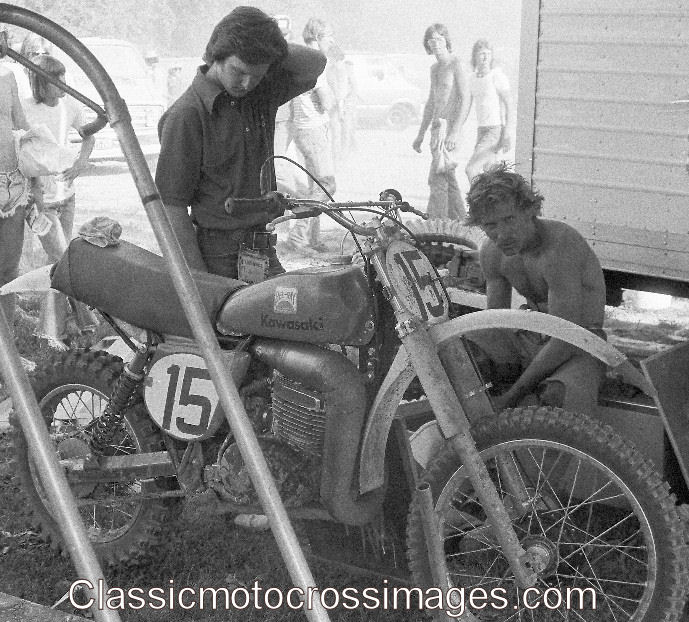
My last year racing motocross was on a Kawasaki so I was always interested in their factory effort. Gary Semics was their 500 pilot. He was a very smooth open class rider who would later help train Jeremy McGrath. I was surprised how light weight the Factory bike looked. The forks were extremely small diameter and the fenders and plastic slider covers were so thin they were transparent. The swingarm looked to be double triangulated aluminum. This bike was rare even for a factory works bike.
|
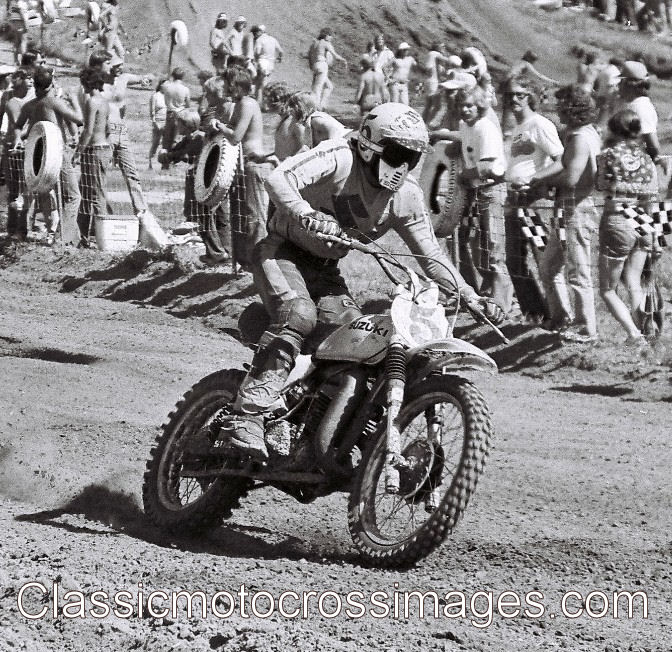
Bill Grossi was a Suzuki Factory racer. He was talented but he always seemed to be hurt. Here you can see an improvised duct tape splint on his lower right leg.
|
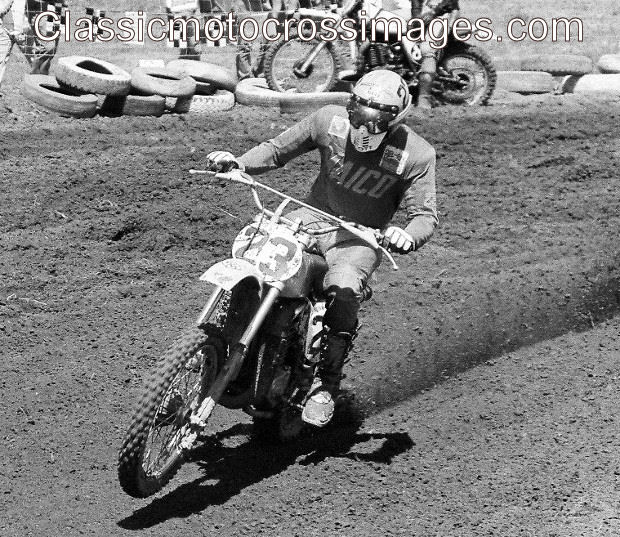
Gaylon Mosier was on a Maico that year. He was another of a long list of West Coast riders who were good enough for a factory ride but never fast enough to be considered in the elite group.
|
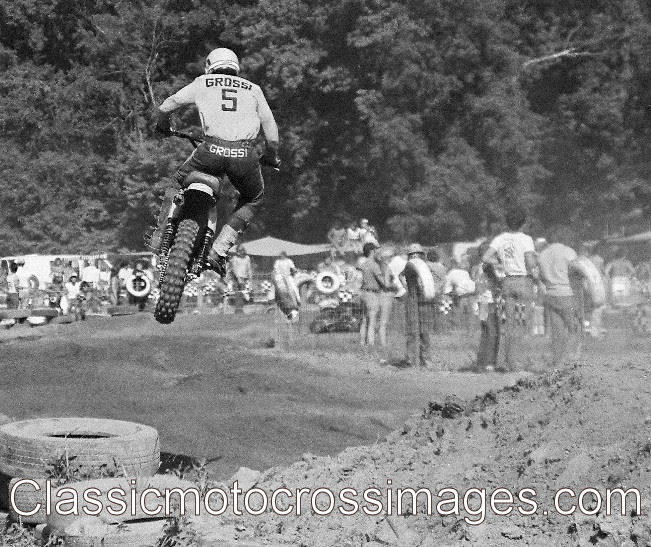
I can remember watching Grossi in this particular section. He would hit the jump extremely fast and would pitch his bike sideways to line up for the next turn. No one else seemed to catch on to this line but it was fun to watch.
|